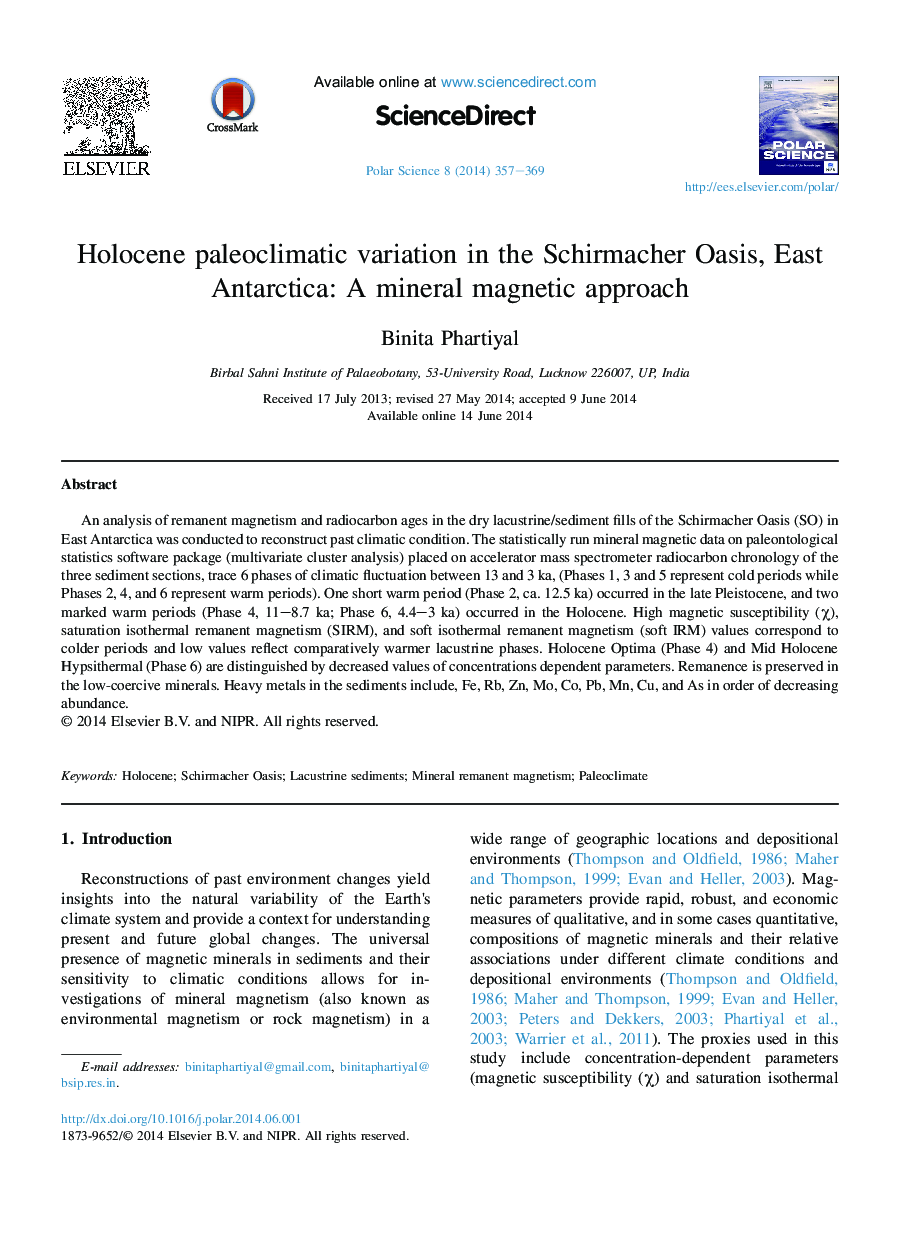| Article ID | Journal | Published Year | Pages | File Type |
|---|---|---|---|---|
| 4683324 | Polar Science | 2014 | 13 Pages |
An analysis of remanent magnetism and radiocarbon ages in the dry lacustrine/sediment fills of the Schirmacher Oasis (SO) in East Antarctica was conducted to reconstruct past climatic condition. The statistically run mineral magnetic data on paleontological statistics software package (multivariate cluster analysis) placed on accelerator mass spectrometer radiocarbon chronology of the three sediment sections, trace 6 phases of climatic fluctuation between 13 and 3 ka, (Phases 1, 3 and 5 represent cold periods while Phases 2, 4, and 6 represent warm periods). One short warm period (Phase 2, ca. 12.5 ka) occurred in the late Pleistocene, and two marked warm periods (Phase 4, 11–8.7 ka; Phase 6, 4.4–3 ka) occurred in the Holocene. High magnetic susceptibility (χ), saturation isothermal remanent magnetism (SIRM), and soft isothermal remanent magnetism (soft IRM) values correspond to colder periods and low values reflect comparatively warmer lacustrine phases. Holocene Optima (Phase 4) and Mid Holocene Hypsithermal (Phase 6) are distinguished by decreased values of concentrations dependent parameters. Remanence is preserved in the low-coercive minerals. Heavy metals in the sediments include, Fe, Rb, Zn, Mo, Co, Pb, Mn, Cu, and As in order of decreasing abundance.
